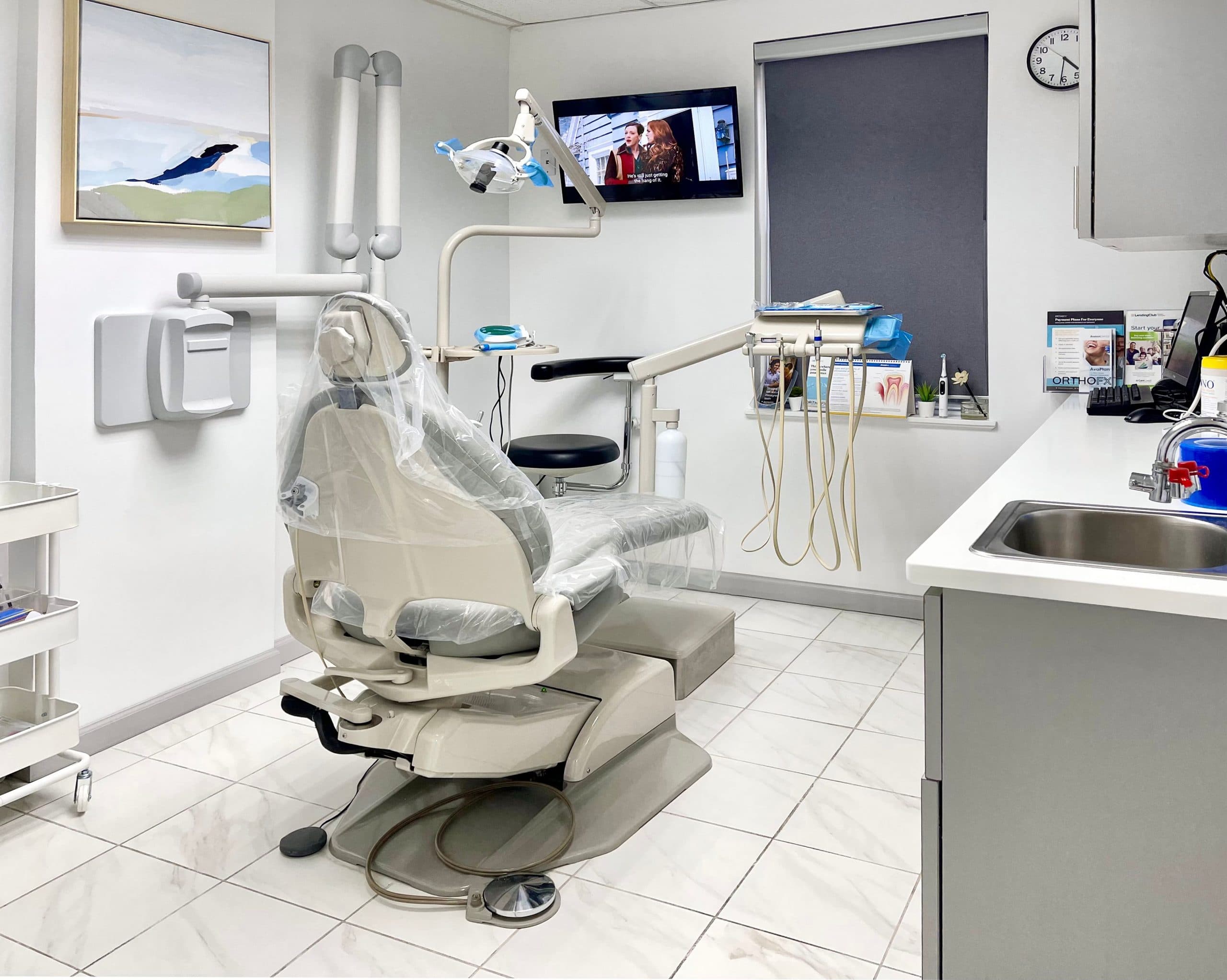At Avalon Dental, we offer an extensive range of dental services. This includes pediatric, cosmetic, restorative, emergency and general dentistry. In addition to our General Dentists, we also have an Oral & Maxillofacial Surgeon located on-site for specialized cases, ensuring you utter comfort and convenience.
Restorative and general dentistry at Avalon Dental is mainly focused on restoring the teeth’ function and preventing tooth decay when needed. To achieve this, The doctor and our team help patients create an oral health routine consisting of a dental cleaning, consistent exams, and at-home care. With regular maintenance and care, you can stop the build-up of calculus and plaque under the gums and around the teeth, which often results in a range of dental problems such as bone damage, gingivitis, tooth decay, and ultimately, tooth loss.
Preventative Care
A routine checkup exam, x-ray and and dental cleanings is essential to maintaining your mouth’s overall health. During your preventative dental visits, we check the condition of your teeth and gums carefully, catching any signs of dental disease. Even if your teeth seem healthy and strong from the outisde, during your periodic exam and x-rays, we can detect any changes to your dental health including any signs of an infection or decay before they cause you pain or discomfort. During your visit, your dentist may also conduct an Oral Cancer screening and check your gums for other conditions such as gum disease. The American Dental Association recommends to visit your dentist for a preventative exam and cleaning at least every 6 months.
Why are routine dental checkups and cleanings important?
Routine exams, x-rays, and cleanings help detect early signs of dental problems like decay, infection, or gum disease—often before you feel pain. Preventative care allows your dentist to monitor changes in your oral health and treat issues early, helping you avoid more complex procedures later.
How often should I schedule preventative dental visits?
The American Dental Association recommends visiting your dentist every 6 months for a checkup and professional cleaning. These visits help remove plaque and tartar buildup, screen for oral cancer, and maintain the health of your teeth and gums over time.

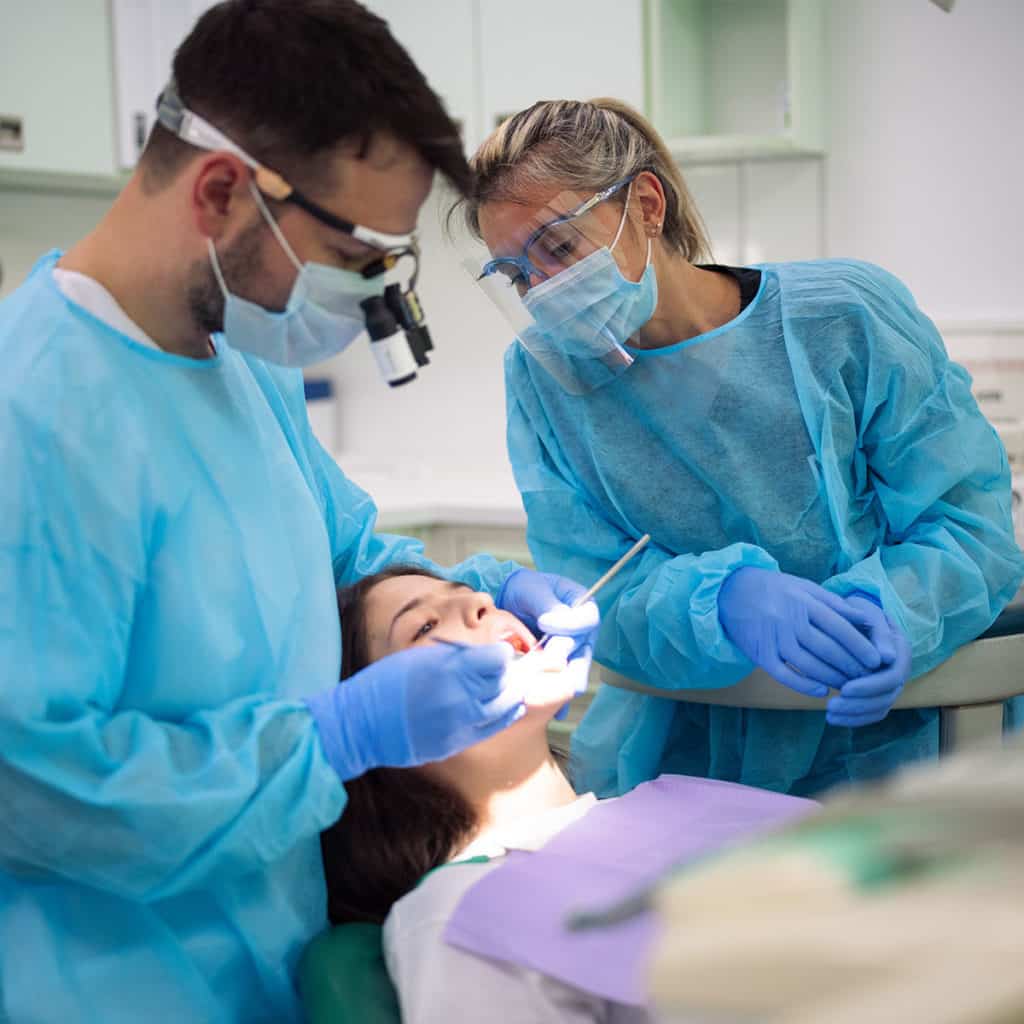
Periodontal Maintenance
Professional dental cleanings help prevent dental disease. If you are diagnosed with gum disease, your dentist may schedule you every 3 months to come in for a cleaning called a periodontal maintenance. Regular brushing and flossing remove most dental plaque, but not all. Any plaque remaining will soon harden into tartar or calculus, a substance that is only removable during a professional dental cleaning. Plaque and calculus causes bad breath, inflammation, gum infections, as well as increases your risk of tooth decay and other health problems. A dental cleaning is the easiest way to prevent this build up in your teeth and gums, as well improving your oral hygiene habits at home.
What is periodontal maintenance and how is it different from a regular cleaning?
Periodontal maintenance is a specialized dental cleaning recommended every 3 months for patients with gum disease. Unlike routine cleanings, it targets deeper areas below the gum line to remove plaque and tartar buildup that can cause or worsen periodontal issues.
Why do I need cleanings every 3 months if I have gum disease?
Gum disease creates pockets where bacteria can accumulate quickly. Cleaning every 3 months helps prevent infection from returning and keeps inflammation under control. It’s a crucial part of managing gum health and preventing tooth loss.
Composite Fillings
Composite resin fillings are fillings that blend in with your natural teeth, a good solution to repair small to medium-sized cavities. Composite resin materials are biomimetic – it mimics the tooth’s natural structure. When placing composite fillings, the tooth is numbed with local anesthesia. Our dentist will carefully remove the damaged or decayed portion of the tooth and shaping the tooth. Once the cavity is removed, cleaned and dried, the composite resin is packed carefully layer by layer and hardened with a curing light. Afterwards, the filling is smoothed and polished. Fillings are the most common general dentistry procedure as studies show around 92% of adults in America have cavities.
What are composite fillings and why are they recommended?
Composite fillings are tooth-colored restorations made from resin that blend naturally with your existing teeth. They’re ideal for repairing small to medium cavities and are preferred for their aesthetic appearance and ability to preserve more of the natural tooth structure.
What is the process for getting a composite filling?
The procedure starts by numbing the tooth with local anesthesia. The dentist removes the decayed portion, cleans the area, and carefully applies the composite resin in layers. Each layer is hardened with a special light, then shaped and polished to match your bite and smile.


Root Canals
A root canal procedure is also called root canal therapy or endodontic therapy. This is a safe, relatively painless treatment done to preserve the natural tooth in the cases of large cavities causing severe decay or infection, and as an alternative to an extraction. During a root canal treatment, the tooth is numbed with local anesthesia. Our dentist will make a small opening in the tooth to see the pulp chamber, and use special tools called files to remove and clean the pulp. Once the pulp chamber and root canals are removed, they are cleaned and disinfected. In cases of a large infection your tooth may have medication placed inside to ensure the infection is removed completely. After the tooth is throughly cleaned and free of any infection, it is sealed with a material called core build up or a fiber post. Depending on the condition of the tooth, a dental crown may be need to restore the tooth to provide structural support.
When is a root canal necessary?
A root canal is recommended when a tooth has a deep cavity, severe decay, or infection that affects the pulp (nerve) inside the tooth. It’s a way to save your natural tooth and avoid extraction while relieving pain and stopping the spread of infection.
Does a root canal hurt?
Modern root canal therapy is safe and relatively painless. The procedure is done under local anesthesia to numb the area completely. Most patients report it feels similar to getting a standard dental filling, with relief from pain afterward.
Periodontal (Gum) Disease Treatments
Gum disease, formally known as periodontal disease is estimated to affect 80% of American adults. Some signs of gum disease may include: loose teeth, bleeding gums, swollen, red, or puffy gums, bad breath, receding gum line, changes or movements in tooth position and alignment. Regular dental cleanings are the easiest way to help prevent gum disease. Without the proper treatment of gum disease, the gum’s condition can worsen over time, and eventually lead to tooth loss and impacts to your overall health. Advanced gum disease is shown to be connected with health problems such as heart disease, diabetes, stroke, respiratory problems, and increased health risks during pregnancy. Treatments for gum disease may include Scaling and Root Planing known as a Deep Cleaning, where the tartar, plaque and bacteria is removed from below the gums. Afterwards, patients may be put on a 3 months schedule for a periodontal maintenance cleaning. Other treatments include dental surgery for gum infections such as crown lengthening or bone grafting surgery.
What are the early signs of gum disease I should watch for?
Common symptoms include bleeding gums, persistent bad breath, red or swollen gums, gum recession, loose teeth, and changes in tooth alignment. If you notice any of these signs, it’s important to schedule an evaluation promptly to prevent progression.
How is gum disease treated at Avalon Dental?
We offer non-surgical and surgical treatments based on severity. This includes scaling and root planing (deep cleaning), periodontal maintenance every 3 months, and procedures like crown lengthening or bone grafting when needed. Early intervention is key to preserving your teeth and protecting your overall health.
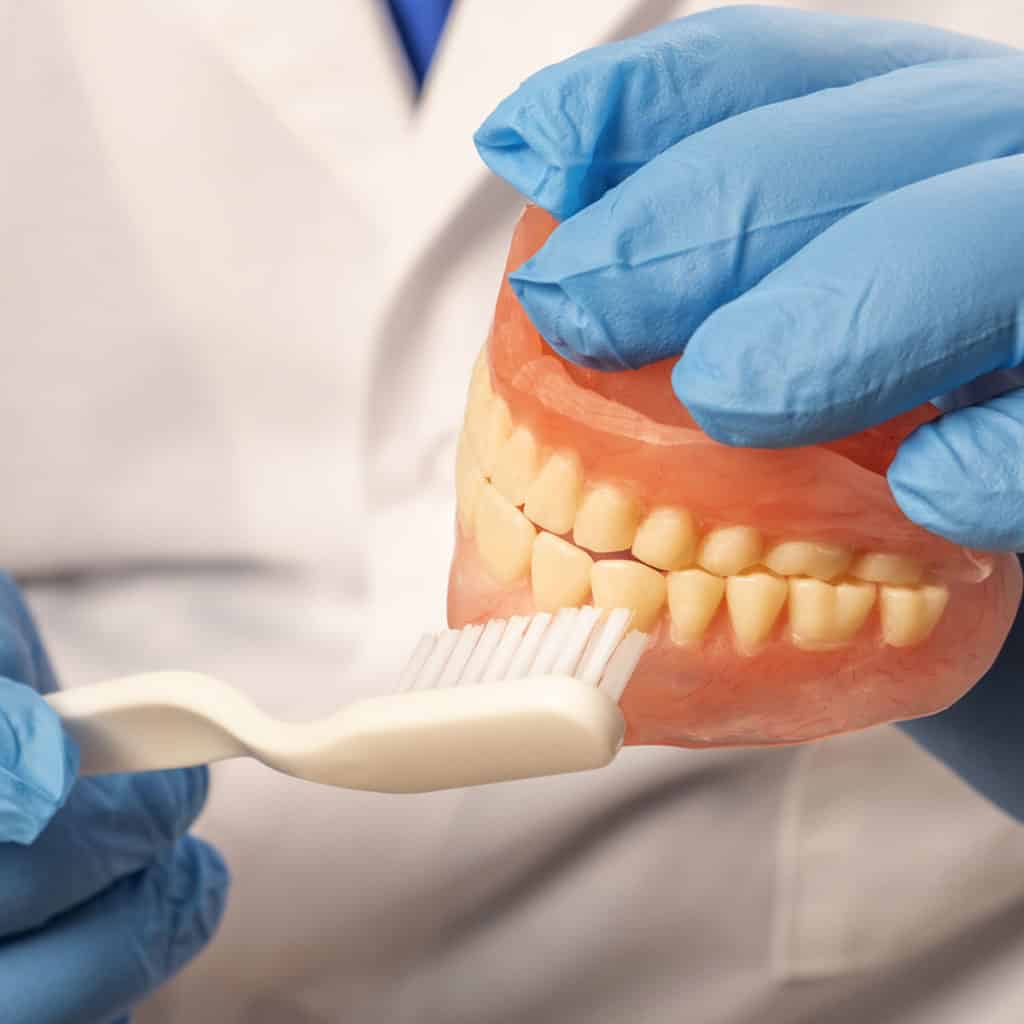
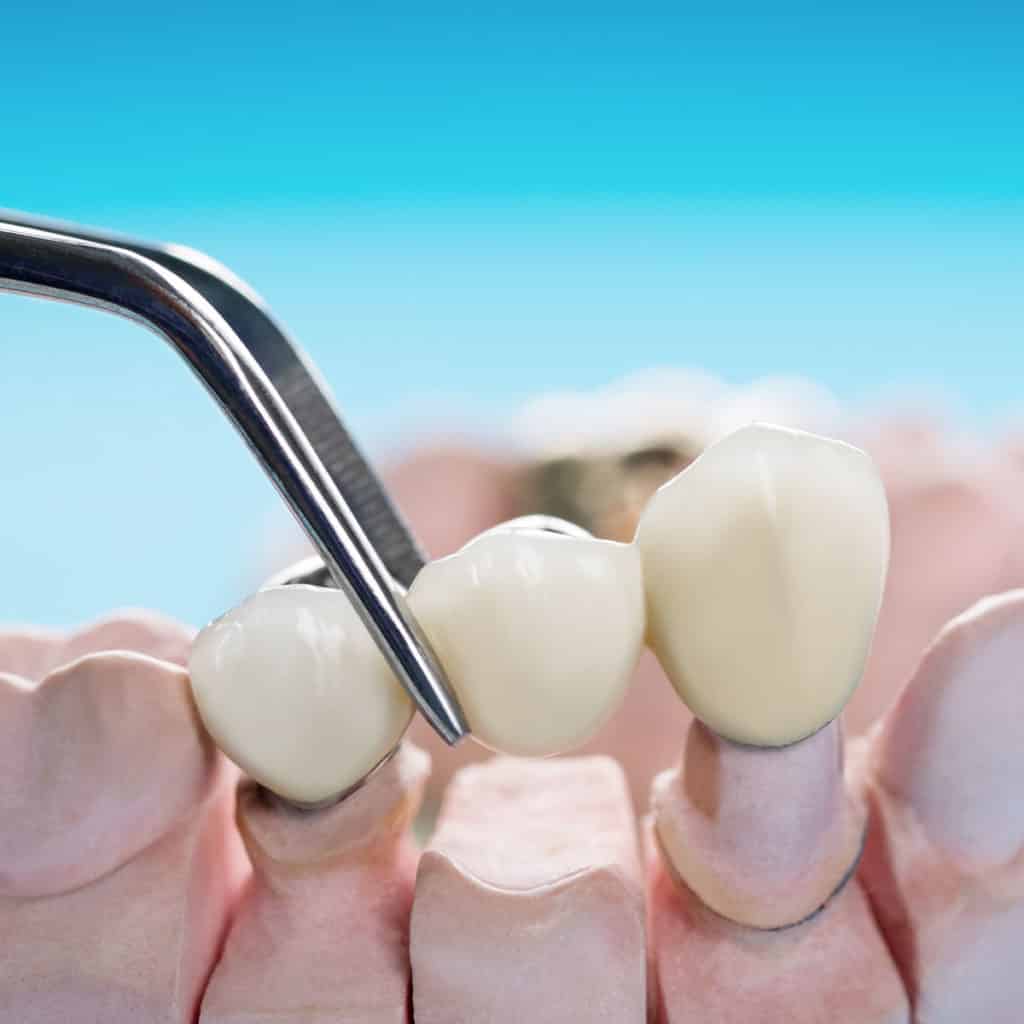
Crowns and Bridges
Dental crowns are a procedure also called a cap because it covers the entire tooth, so your original tooth is protected underneath the dental crown. A dental crown can be made of many different materials but most common are: all porcelain, porecelain fused to metal, zirconia, and less commonly but still used – metal alloys such as gold. Usually, a dental crown is needed if you have a severely damaged tooth and where much of its original structure is damaged. Damage can occur because of decay or trauma, such as a large cavity or a broken tooth. A crown may also be necessary after root canal treatment. A crown usually takes two visits to complete – the first visit our dentist will shave down tooth your tooth remove any broken or decayed tooth structure. Afterwards, the tooth may be rebuilt with core build up material, and a final impression is taken to be sent to the lab for fabrication. Your tooth will be covered with a temporary crown, made at the same time of your visit until you receive your new permanent crown. A dental bridge is similar to a dental crown except it is a procedure replacing 1-3 missing teeth. The surrounding teeth are used as supporting retainer crowns to connect a “bridge” to the missing teeth.
What is the difference between a dental crown and a bridge?
A dental crown is a cap placed over a damaged or weakened tooth to restore its shape, strength, and function. A dental bridge, on the other hand, is used to replace one or more missing teeth by anchoring artificial teeth to adjacent crowned teeth for support.
How long does it take to get a dental crown or bridge?
Both procedures typically require two visits. During the first visit, the dentist prepares the tooth (or teeth), takes impressions, and places a temporary crown or bridge. The final custom crown or bridge is then fitted and permanently placed during the second visit once it returns from the lab.
Dentures
Dentures are a removable appliance to replace one or more missing teeth. A denture is hand designed and custom fit each patient’s mouth to provide the proper support for your jaw and face. There are many types of dentures. These can include: conventional full dentures, partial dentures, immediate dentures, or implant dentures (implant-supported dentures). Most dentures are made with a pink shade acrylic base resting directly on the gums. The base supports denture teeth raange to replace missing teeth and for functional purposes of biting and chewing food. Some dentures may be made out of a flexible material or metal depending on the needs of the patient. Implant dentures are the most advanced type of dentures in dentistry today. Instead of conventional dentures that rely on resting on the gums, implant dentures have multiple implants, made from medical grade titanium that are surgically inserted into the jawbone. Implant dentures snap directly onto the dental implants or onto a titanium bar fitted over the dental implants. This denture is still removable, but offers much better support for chewing and biting than conventional dentures that use denture glue.
What types of dentures do you offer at Avalon Dental?
We offer several types of dentures including conventional full dentures, partial dentures, immediate dentures, and implant-supported dentures. Each denture is custom-designed for comfort, stability, and proper support of your jaw and facial structure.
What are implant dentures and how are they different?
Implant dentures are advanced removable dentures that attach securely to dental implants placed in the jawbone. Unlike traditional dentures that rely on adhesive and rest on the gums, implant dentures snap onto implants or a titanium bar, offering better stability and improved chewing function.
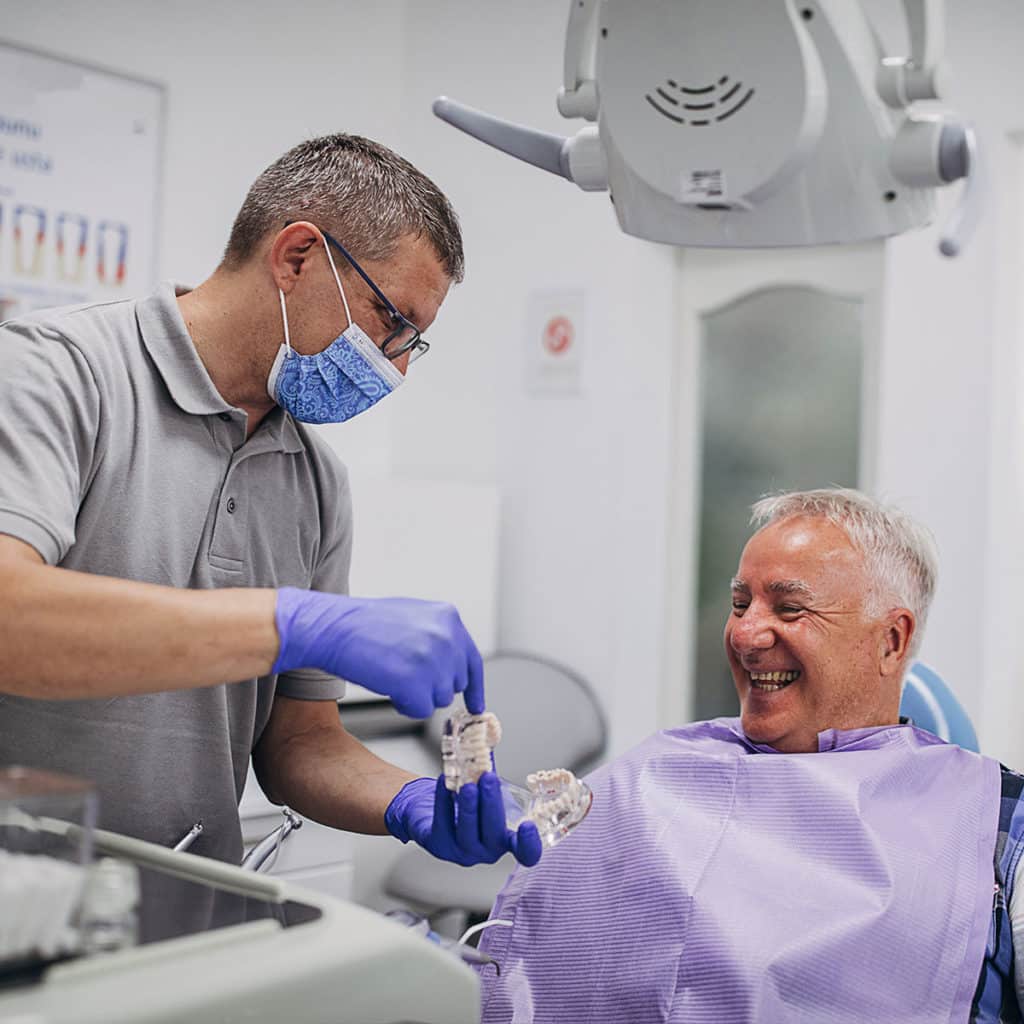

Emergency Dentistry
A dental emergency is any dental problem that needs immediate treatment to stop bleeding, save a tooth or alleviate severe pain. Examples of dental emergencies include:
severe toothache, facial swelling, dental abcess, broken jaw, broken filling, broken dental crown, or loose tooth.
Leaving your dental emergencies untreated can lead to serious complications that may become life-threatening. In severe cases, some dental emergencies may need to be attended to at the emergency room, such as if you have dental swelling or infection accompanied with fever, or swelling in the face or neck. Our office is able to treat non life-threatening dental emergencies such as emergency extractions, root canals, incision & drainage or tooth and gum pain.
What qualifies as a dental emergency?
A dental emergency includes any condition that requires immediate attention to stop bleeding, relieve severe pain, or save a tooth. Common examples include a severe toothache, facial swelling, dental abscess, broken jaw, broken crown or filling, or a loose or knocked-out tooth.
Can Avalon Dental treat all types of dental emergencies?
We can treat most non life-threatening dental emergencies in-office, including emergency extractions, root canals, incision & drainage, and urgent tooth or gum pain. However, if you are experiencing swelling with fever or symptoms affecting your breathing or swallowing, please visit the emergency room immediately.
Oral Surgery & Extractions
If you need to have a tooth removed, we take every step to make sure the procedure is as comfortable as possible with topical and local anesthesia. A simple tooth extraction where the tooth is visible is usually removed quickly. When a tooth isn’t visible or partially erupted, removal is more difficult. A surgical extraction is where a small opening may be made in the gums or bone to access the tooth and requires it to be sectioned or cut into smaller pieces. A wisdom tooth extraction requires special imaging called a panoramic x-ray to diagnose the type of extraction needed. Wisdom teeth may grow differently due to being the last teeth to erupt, with the limited space in your jaw, often causes them grow in crowded positions, causing the teeth to be impacted. Impacted wisdom teeth extractions are an oral surgery procedures that usually require a specialist, called an Oral Surgeon to remove. In some cases where after a tooth is extracted and an implant or other replacement procedure is needed, a bone grafting procedure may be recommended to save and regrow the surrounding jaw bone. Common bone graft surgeries include:
Socket preservation, a procedure where artificial bone is placed into the empty socket immediately after an extraction.
Ridge augmentation, a procedure where the bony ridge that supported your natural teeth is restored to a correct height and width to allow space for an implant(s).
Sinus augmentation, a procedure where the sinus is lifted – the membrane between your sinus cavities and jawbone, creating a space that is filled with bone graft material.
What’s the difference between a simple tooth extraction and a surgical extraction?
A simple extraction is performed when the tooth is fully visible and easily accessible—it can usually be removed quickly using standard instruments. A surgical extraction is needed when a tooth is impacted, partially erupted, or broken below the gum line. This involves making a small incision in the gum or bone and may require sectioning the tooth into pieces for removal.
When is bone grafting recommended after a tooth extraction?
Bone grafting is often recommended when a tooth is removed and a dental implant or future tooth replacement is planned. Procedures like socket preservation, ridge augmentation, or sinus augmentation help rebuild the jawbone to support implants and maintain your facial structure.


Pediatric Dentistry
Pediatric dentistry is dental care for children ranging from ages 0-18 years of age. For young children, they can be seated on the parent’s lap while our dentist performans an exam. During this visit, we may need to take dental x-rays to check the baby teeth, unerupted adult teeth as well as signs of any cavities. Afterwards, a child dental cleaning is performed and topical fluoride treatment is recommended 2 times per year to prevent cavities. Preventative treatment such as sealants are recommened on adult teeth in children. By painting a sealant on the grooves of the back teeth and sealing the surfaces, sealants are an effective way to prevent cavities. Other procedures such as child fillings, baby root canals and stainless steel crowns are able to done at our office. Our dentist and staff is trained and able to treat children over 4 years of age, we have custom children’s entertainment available to keep the little ones less anxious about being in the dental chair (however we do not provide nitrous oxide laughing gas or sedation)
What age should my child first see a pediatric dentist?
We recommend that children visit a pediatric dentist as early as age 1 or within six months of their first tooth erupting. At Avalon Dental, we provide gentle care for children from infancy through their teenage years and offer child-friendly dental exams, cleanings, and cavity prevention treatments.
Do you offer sedation or laughing gas for children?
No, we do not offer nitrous oxide (laughing gas) or sedation at our office. However, our dental team is specially trained to treat children over the age of 4 using a compassionate, kid-friendly approach. We also provide customized entertainment to help make dental visits fun and reduce anxiety.
View All Of Our Dental Services
General Dentistry
- Routine Checkup Exam
- Dental X-Rays
- Dental Cleanings
- Periodontal Maintenance
- Composite Fillings
- Dental Crowns and Bridges
- Dentures
- Root Canals
- Periodontal (Gum) Disease Treatments
- Severe Toothache
- Facial Swelling
- Dental Abscess
- Broken Jaw
- Broken Filling
- Broken Dental Crown
- Loose Tooth
- Oral Surgery & Extractions
- Pediatric Dentistry
- Cosmetic Bonding
- Digital Smile Design
- Clear Aligners
- Teeth Whitening (Opalescence and POLA)
Cosmetic Dentistry
- Porcelain Veneers
- Porcelain Crowns
Implant Dentistry
- Implant Bridges
- Implant Dentures
Clear Braces: Invisalign® & OrthoFX™
- Invisalign
- OrthoFX
